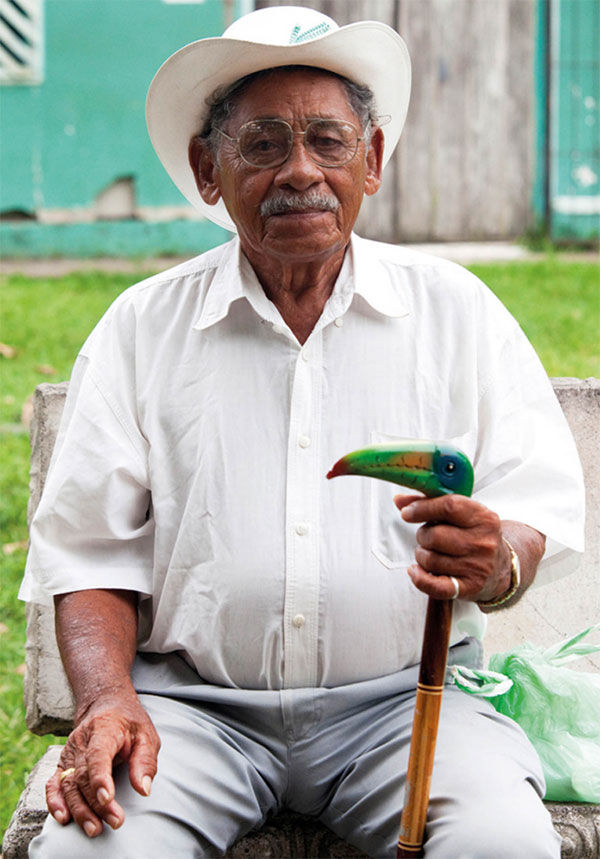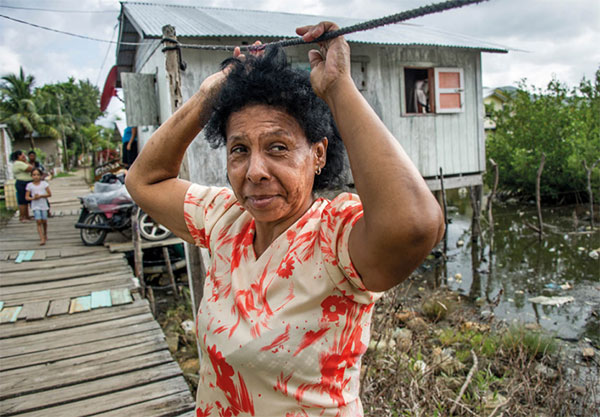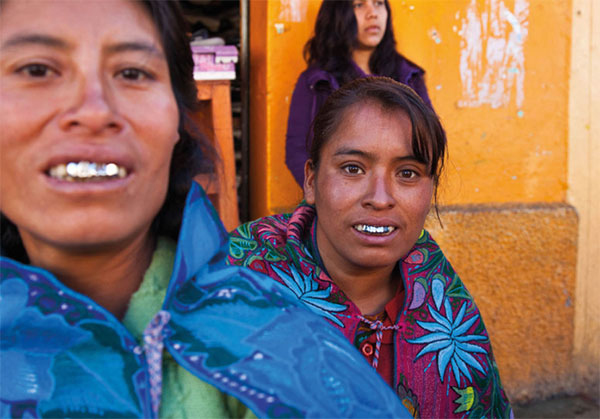PEOPLE
The people of Central America are as diverse as the natural landscape in which they live, but collectively they share a distinct Latin American heritage.
Latino (ladino or mestizo) culture dominates Central America and competes with the US for cultural hegemony. The influence of the rest of the Latin world is very evident throughout the isthmus, especially in its music. You will be lambasted with rhythms from all over the Americas in the buses, bars, and clubs: merengue tunes from the Dominican Republic; salsa from Colombia; reggaetón from Puerto Rico; and Hispanic hip-hop from California add lyrical joy, sorrow, and social comment to everyday life.
A ladino is, strictly speaking, someone who is identifiably ‘Western’ in outlook, someone who speaks Spanish, who sees themselves as Latin American rather than Native American. There are also ladinos who are of Mayan or other Indigenous origins but no longer speak a Mayan language or dress in Indigenous style. Many are more Mayan than Spanish, though there are a few ladinos who have European ancestry.
The region’s elite is largely of white, European origin and concentrated within a select group of families. Sometimes called criollos, this oligarchy retains ties with Spain, but also increasingly with Miami and the US’s Latino diaspora.
Of African descent
The Garífuna, a people with an extremely rich history that they trace back to Africa, arrived to the region on two shipwrecked slave boats, via the Caribbean islands of St Vincent and Roatán. The Garífuna are sometimes called Black Caribs – ethnically quite accurate as the Garífuna are also descendants of Africans and the Indigenous Caribs – though the people themselves now prefer the name Garífuna. There are some 22,000 Belizean Garífuna, mainly around Dangriga and in the southern Toledo district, though many more live in Honduras (and the United States). There are also Garífuna villages in Nicaragua and Guatemala.

Local man in Tortuguero, Costa Rica.
Corrie Wingate/Apa Publications
Some Garífuna, well-liked by the Native Americans, intermarried and, over the years, developed an identity and language of their own, called Miskito. British pirates joined forces with the Miskitos, and together they wreaked havoc along the Atlantic coast of Costa Rica and in the cacao plantations. For the Miskitos, the undefended plantations offered little resistance. They sailed in for their biannual raids, took the cacao, captured the black slaves, and set off again. Traces of Miskito influence remain in the Atlantic coast area, where many of the place names come from their language, including Talamanca (Talamalka), Sixaola, and Cahuita.
There are many other groups of Central Americans of African descent, especially along the Caribbean coast. In Belize, English-speaking Creoles form around a third of the country’s tiny 330,000-strong population, living mainly in Belize City and the towns. Culturally, most Creoles feel much closer to Jamaica and the islands of the British West Indies than the rest of Latin America, and listen to reggae, soca, punta, and other Caribbean rhythms. The African-American influence has also grown noticeably: musically, hip-hop and R&B are becoming much more prevalent, and on the sports fields, basketball is now more widely played than cricket.

A marginalized community in Bonacca Cays, Honduras.
From Honduras to Panamá, many Afro-Caribbean islanders found work in the region in the 19th and 20th centuries. In Panama they came to help build the canal, while in Guatemala, Honduras, Nicaragua, and Costa Rica they found employment on banana and sugar-cane plantations. Others harvested cacao or worked on barges and railroads, proving willing to tolerate hazardous working conditions, which included exposure to yellow fever, malaria, and venomous snakes, as well as severe physical labor and oppressive management. Some were ultimately given land along the railroad right of way, and others, thanks to their command of English, rose from the ranks of laborers to become managers in the banana business and on the railroads. Most originally planned to earn whatever they could and then return to their islands. The maltreatment of workers in the banana fields of the Caribbean United Fruit Company is well documented. However, these Afro-Caribbeans were certainly not invulnerable and they, too, died in their thousands while working in the region.
The Maya
There are around 9 million Maya spread across Guatemala, Mexico, Belize, El Salvador, and Honduras today – about half of the region’s total population. These are the survivors of the region’s great civilization: the descendants of the temple builders, astronomers, mathematicians, architects, artists, artisans, farmers, and soldiers.
On 21 December, 2012, celebrations were held at many archeological sites to mark the end of a Great Cycle (5,125 years) in the Maya Long Count calendar. While some predicted the end of the world, to the Mayans it was simply the start of a new cycle.
They are a far from homogeneous race – speaking some 30 different languages, they worship at Catholic, Protestant, and Evangelical churches. Yet many still also continue to honor Maya religious practices forged over thousands of years, and blend pagan and Western faiths: prayer keepers use the Tzolkin 260-day calendar while celebrating Christianity’s holy days. After centuries of cultural attack, ridicule, and humiliation at the hands of the state, this unique fusion of Western and indigenous faiths prevails in most indigenous communities and permeates in the minds of many.

Indigenous Mayan women in Chiapas, Mexico.
Alamy
Most of Mexico’s 2 million or so Maya live in the southeastern state of Chiapas and in the Yucatán Peninsula. The Chiapaneco and Yucateco Maya form two distinct communities, each with their own languages and traditions. The vast majority of Chiapas Maya are highlanders, with customs that are very similar to those in Guatemala just over the border (indeed, the state was part of Guatemala until the early 19th century). Their rugged, mountainous homeland, with peaks reaching over 3,200 meters (10,500ft), has always been isolated from the rest of Mexico, allowing traditions to survive, particularly around the town of San Cristóbal de las Casas. This is also the poorest corner of Mexico, with the highest illiteracy, birth, and child mortality rates in the region.
In Guatemala, the Maya mainly live in the western highlands, between the Mexican border and the capital. In these highlands they form some 80 percent of the population, and it is here that Maya customs and traditions remain strongest and continue to defy mainstream Latin American and North American cultural influence. The K’iche’ Maya are the most numerous (more than 1 million), the descendants of the warrior Tecún Umán, who was defeated in 1535 by Pedro de Alvarado the conquistador, close to the modern-day town of Quezaltenango. The K’iche’ have adapted relatively well to life in modern Guatemala and have a reputation as skilful entrepreneurs and traders. Rigoberta Menchú, the 1992 Nobel Peace Prize winner, is from a K’iche’ family (for more information, click here).